Translating is more than just translating

I want to take you with me on a trip down memory lane today. It begins in our childhood, when we dared to take the first steps towards the professional future that we live in today. In the course of this journey, we come to a crossroad with signposts. Today, we decide to follow the path that leads us to become a professional translator. Like many other paths, this one is not always straight. It is full of twist and turns, and becomes rocky at times. Along the way, we gain an insight into the challenges that the future professional translator must face and the requirements he/she must meet. But at the end of the path, our goal awaits us: to be a professional translator, to have reached the destination.
The first small steps to becoming a professional translator
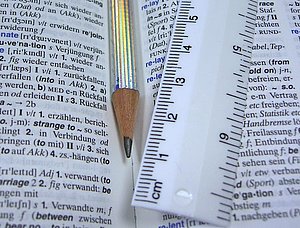
Do you also enjoy reminiscing about the good old days, back when you were in school? Under the stern gaze of the English teacher or – as in my case – even the Latin teacher, being tested orally in front of the whole class on the vocabulary that we had all dutifully written down in our vocabulary books.
With comparatively little effort and a good oral grade, you could quickly make up for one or two flaws in school assignments or exams in order to boost your report card grade a little bit.
But these school assignments were also tricky, as they certainly continue to be today. The teachers always came up with something new to annoy the students. Because suddenly it wasn’t just about learning vocabulary by heart. We were confronted with whole sentences whose meaning and intention had to be grasped, and with inflected word forms that had absolutely nothing to do with the dictionary form of the word we had learned from the vocabulary book.
Added to this was grammar, so that the inflections could be accurately assigned and the meaning of the sentence thus correctly grasped. We had to be diligent to get the right spelling, otherwise the teacher would use the red pencil. And then there were those oral dictations, in which everything sounded different all over again and you quickly lost the thread and the meaning.
Some of you may have tales similar to these, which are based not least on my own school experiences and memories.
Forget what you learned in school!
And then there was the big step of going to university. One of the first sentences uttered by one of my university lecturers was “Forget the English you learned in school. Now you are going to really learn the language.” And the French lecturer greeted us likewise, with the words: “This is the last sentence you are going to hear me say in German. Dès maintenant, on parlera français [From now on, we are speaking French].” Taking French regional studies in French after just five years of French classes at the secondary level was an interesting experience. It was more than a little rough at first.
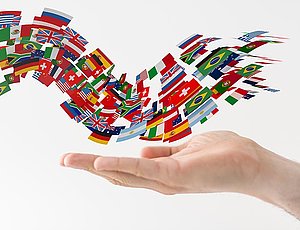
But that’s not all. Regional studies were accompanied by language proficiency – both oral and written – as well as phonetics (listening comprehension) and grammar. But higher-level language and translation studies were also included in the curriculum so that students could gain a broader understanding of language history and language development and, as their studies progressed, increase their sensitivity to the meaning of the written and spoken word in both the mother tongue and the foreign language.
Why is all this necessary to become a translator?
When I completed this solid introduction to linguistics and translation studies, I received an intermediate diploma, and these subjects went on to play more of a secondary role. I then found myself at a turning point, deciding what nonlinguistic field I wanted to study in more depth. At that time, there was a choice of technology, law, or business administration and economics, with a further two subject areas being examined in more depth in each case.
So why nonlinguistic subjects as well now? The reason was that, as a future translator, you gained a specialization and acquired technical expertise as well as vocabulary. This is essential when trying to translate a text, as I became aware of during and after my studies.

Here is an example from my own experience: During my studies, an acquaintance asked me to make some texts from an English-language golfing forum “accessible” to a German clientele without focusing too much on the English.
Well, as a student, neither my technical skill nor my financial means to practically devote myself to golf were remotely adequate to take on such a project, even though I had very free rein in my translating in this case. I was allowed to trim and rewrite content however I wanted, as long as the meaning and intent of the message remained intact.
It didn’t help that I invested several hours into continual research and still didn’t understand much about the various tee-off and swing techniques of the professionals that the English-speaking users were discussing among themselves.
Not to mention committing this to paper with a clear conscience that I hadn’t introduced any errors. After trying this for several days, I had to drop the promised favor.
Why am I relating this story to you? I want to give you a better understanding of the path and skills it actually takes to be a professional translator and to translate – even more so to be a professional translator with mt-g. As in so many sectors and professions, people who discover the occupation of a professional translator for themselves and choose this path must also invest a lot of time and effort in their education.
What it means to be a professional
It is not enough for a professional translator to know that the German “Bilanz” is called a “balance sheet” in English. They must also understand how the balance sheet is structured, which items are listed as assets and which as liabilities. (You’ve caught me out – I went down the business administration and economics path at the time).
Otherwise, the translator may know the vocabulary but not understand the context. Sooner or later this will end up in the wrong content or the wrong meaning because an entry or a word has been misinterpreted. This can have fatal consequences for a balance sheet.
It is not much different in medicine. For example, a translator who has memorized medical vocabulary but does not have a background medical expertise will, for example, not recognize if unintentional errors have crept into the text to be translated.
Mistakes happen and, for all the professionalism, there are still human beings behind the texts.
But the translator must then have the skills to recognize these errors.

Imagine that a professional translator has received a text on the surgical procedure to treat carpal tunnel syndrome (in the wrist) for translation, but the text mentions that an incision is made in the groin area, as sometimes occurs with cardiac catheters. Despite my non-existent medical background, my understanding in this case would be sufficient to stop me in my tracks. Otherwise, I would dutifully research the phrase “incision in the groin” and adopt the corresponding term. Since I don’t have a medical background, I would probably otherwise be convinced that I had provided a correct translation.
This observation also applies to a professional translator who, although knowing the correct term for “incision in the groin” in his/her native language, does not have the medical knowledge that this instruction is rather useless in connection with carpal tunnel syndrome.
First of all, a professional translator must have knowledge of his/her subject area. In the case of our medical technology team, our professional translators usually have the requisite medical and/or technical background for the texts they translate. For example, in the case of the translation of instructions for use of outpatient and inpatient equipment, such as medical couches and chairs or accessories for large medical devices, the translator may need more technical than medical expertise.
Professional translators are linguists with specialist knowledge and an understanding of their target audience

In addition to expertise in the medical field, expertise in the art of translation is also important. As I recounted about my own training to become a qualified translator, my course placed value on language and translation studies in addition to translation skills.
Having a feel for language, expressiveness, and being able to find the right words in the right context – these are also what translation is about. After all, it is important to reach a text’s target group.
For example, the translation of an article for a specialist audience poses different challenges for specialist translators than a translation for lay users or “ordinary citizens.”
But the objective remains the same: the translated text must be understandable by and suitable for the respective target audience, and the intended message of the text must come across to this group.
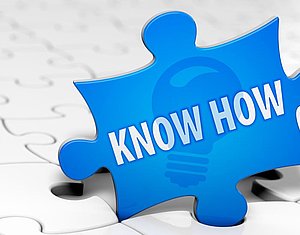
Whereas a medical professional will be content to read a text that is laden with Latin medical terms, a lay user will be overwhelmed by this in most cases. The exact opposite is sometimes the case when a specialist audience is presented with a text that was originally written for a lay audience. In this case, certain professionals will find the text too trivial and unsuitable for use at a specialist conference.
In addition to having expertise in the specialist area, the translator must also have expertise in the linguistic and translation fields. He/she must find the right words in his/her language. Language and translation training imparts the necessary feel for language.
And the translator can also work out the significance of linguistic subtleties. Let me illustrate this using the two examples below.
Our friend Max Mustermann, for example, is known by two completely different names in other languages. In English, Max is often called “John Doe” or “Joe Bloggs,” not “Max Mustermann”.
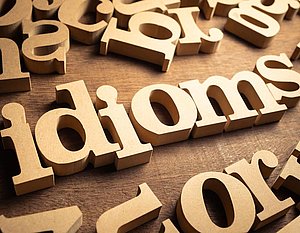
Other examples that are often cited in this context are idioms, such as the German saying “Danach kräht kein Hahn.” Of course, this idiom can be translated literally, such as “This is a thing no rooster will crow for.”
This translation may well be understandable to English-speaking people who have some knowledge of German, or the underlying meaning may be deducible from the context.
But one thing is clear: it doesn’t really sound idiomatic.
By the way, the correct equivalent in English is “Nobody cares two hoots about it.” For the native-speaker reader (in this case, an English-speaking target audience), it will be clear from such wording alone that the whole piece is based on a different text in another language.
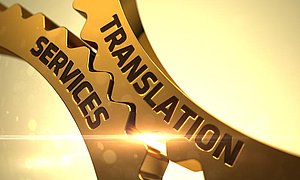
And even if these examples are rather trivial and general, they make one thing clear: recognizing linguistic nuances and making a text not sound like it has been translated is an essential aspect of translation and, depending on the target group for the text, can be quite a challenge.
While the operating instructions for a CE-certified medical device are often factual and based on fixed standards and translation specifications and references (e.g., explanations of symbols, ISO titles, headings, standardized warnings for chemical products and safety data sheets), a product information text or an advertisement for the same product presents a different challenge. Objective and sober language is not desirable here. Rather, product advantages should be emphasized, catchy slogans should stay catchy, and prospective customers should be persuaded by the product.
This is rounded off by a strong understanding of grammar as well as a focus on spelling and typing mistakes. And the translator should use a writing style that does justice to the text, the customer’s requirements, and the target audience.
These subtleties, this feel for the text and language, are learned through formal education.
You get a sense of what it means to be a translator.
To juggle two languages.
To be responsible for the translation taking into account all facets of the original.
And you come to the realization that translating is about more than speaking or understand a language – translating is more than just translating.


